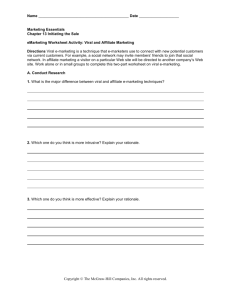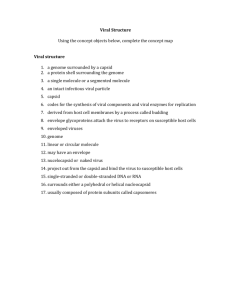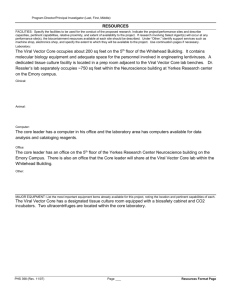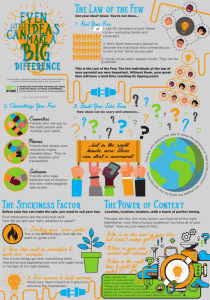File - Mr.Lewis' Online Project Site
advertisement
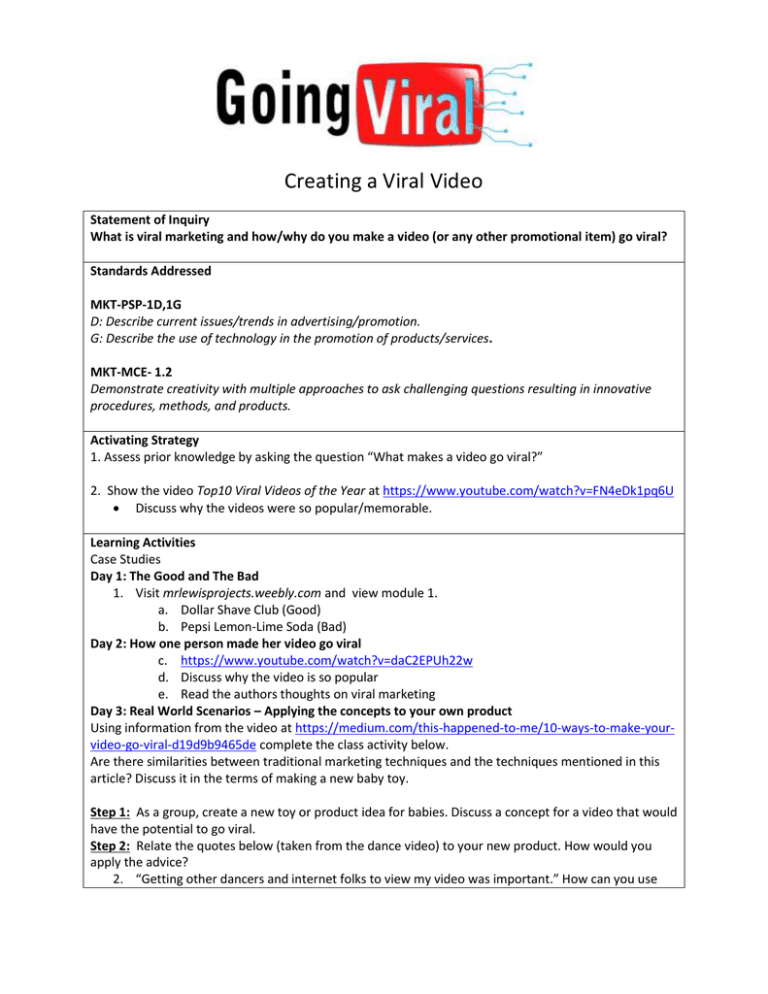
Creating a Viral Video Statement of Inquiry What is viral marketing and how/why do you make a video (or any other promotional item) go viral? Standards Addressed MKT-PSP-1D,1G D: Describe current issues/trends in advertising/promotion. G: Describe the use of technology in the promotion of products/services. MKT-MCE- 1.2 Demonstrate creativity with multiple approaches to ask challenging questions resulting in innovative procedures, methods, and products. Activating Strategy 1. Assess prior knowledge by asking the question “What makes a video go viral?” 2. Show the video Top10 Viral Videos of the Year at https://www.youtube.com/watch?v=FN4eDk1pq6U Discuss why the videos were so popular/memorable. Learning Activities Case Studies Day 1: The Good and The Bad 1. Visit mrlewisprojects.weebly.com and view module 1. a. Dollar Shave Club (Good) b. Pepsi Lemon-Lime Soda (Bad) Day 2: How one person made her video go viral c. https://www.youtube.com/watch?v=daC2EPUh22w d. Discuss why the video is so popular e. Read the authors thoughts on viral marketing Day 3: Real World Scenarios – Applying the concepts to your own product Using information from the video at https://medium.com/this-happened-to-me/10-ways-to-make-yourvideo-go-viral-d19d9b9465de complete the class activity below. Are there similarities between traditional marketing techniques and the techniques mentioned in this article? Discuss it in the terms of making a new baby toy. Step 1: As a group, create a new toy or product idea for babies. Discuss a concept for a video that would have the potential to go viral. Step 2: Relate the quotes below (taken from the dance video) to your new product. How would you apply the advice? 2. “Getting other dancers and internet folks to view my video was important.” How can you use 3. 4. 5. 6. 7. 8. 9. 10. 11. this advice to promote your baby product? “Blogs drove a ton of traffic.” What blogs would you post information on? What would you say? “Try many things. You only need one of them to pay off big.” What would you try to do with your advertising dollars? “Release on a Monday or Tuesday. Especially on slow news days.” How/when would you release your ads? The teacher will discuss the premier of The Man from Uncle. Figure out who has a stake in your product. “My YouTube description was full of links to possible sponsors .” a. What is cooperative advertising? b. What are complimentary items? c. Who/what companies would you ask to spread “word of mouth advertising” for you? . “People share things when they feel emotions.” What emotion would you try to evoke in your ad plan? “Tell a story.” How do you paint the picture for customers so that they visualize themselves using your product? “Make your video as short as possible while still keeping the heart of the story.” How does this relate to press releases and television commercials? “Know where to direct your traffic when it starts coming in. I directed my fans to my website and blog.” If people start to view your video, what other sites would you link them to? “Controversy is good.” Why does the author say this? What other companies have recently seen success in the face of controversy? Day 4: Jonah Berger – Wharton professor and author of Contagious, Why Things Catch On View https://www.youtube.com/watch?v=FN4eDk1pq6U Answer the questions on the video guide In groups of 2-3, begin discussing how to make your own viral videos Summative Assessment Day 5-6: Create a video and a viral marketing plan Set reasonable goals (number of hits, retweets, etc.) Post the videos online and predict and justify which group video will see more success. Differentiation Content ESOL translation services are available for the class online site Screencasts of video making software are available so that students can progress at their own pace without reading deficiencies interfering with their progress. Content in lessons covers a wide array of Bloom’s taxonomy levels and engagement opportunities for all students. Process Students are allowed to choose their roles in the group project. Students are allowed to work individually if requested. Videos and reading links are available for visual and word learners. Auditory learners are allowed to listen to an mp3 or video of the lesson. Kinesthetic learners have the opportunity to complete an interactive assignment online Product Read and write learners type about what they have learned in a blog entry on their portfolio Visual learners create a story board or video of their viral idea. Auditory learners are allowed to give an oral report. Kinesthetic learners act and build a video. Learning Environment Students can read individually if requested Students are split into groups to discuss arguments and ideas Multiple options for learning the material are presented so students can choose their preferred method. They take on more responsibility for their own learning. KUD Know: Students should know how the concepts of viral marketing, social media optimization, comarketing, affiliate marketing, guerilla marketing, conversion rate, pass along rate, and personalization are used in online advertising. Understand: Students should understand that here is a science behind creating viral content. The principles discussed by Mr. Berger are great tools to follow when creating online content. Do: Students will create a viral marketing plan and be able to create a video that becomes popular in a short period of time. The plans strengths, weaknesses, opportunities, and threats will be analyzed along with its evaluation plan so that the success of the video can be determined. Students should be able to discuss the plan and execution of the video launch in terms of why it succeeded or failed. Note: This assignment is for a combined class. When presenting their final project, the Promo students will discuss the differences between traditional promotion and online advertising while also suggesting complimentary promotional vehicles that may help their video gain awareness. The Communication students will discuss how to communicate their message to the largest audience possible in an online environment. Their focus is “How does online content delivery differ from traditional advertising?” Vocabulary Terms Guerilla Marketing: Innovative and unconventional marketing intended to gain maximum exposure using minimal resources Disintermediation: The removal of intermediaries in the supply chain; also referred to as “cutting out the middleman. Conversion Rate: The percentage of website visitors who perform a desired action. Pass-along Rate: The percentage of people who forward a message or file to others. Affiliate marketing is a type of performance-based marketing in which a business rewards one or more affiliates for each visitor or customer brought by the affiliate's own marketing effort Social Media Optimization: Abbreviated as SMO, social media optimization is the process of increasing the awareness of a product, brand or event by using a number of social media outlets and communities to generate viral publicity. Personalization: A strategy where a company learns the personal preferences of each consumer and customizes its marketing plan to them. Amazon.com is well-known for their use of this strategy, where the website recommends products based on a customer’s past purchases and interests. Viral Marketing: In Internet and online advertising viral marketing is a type of marketing technique that relies on and encourages people to pass along a marketing message by word-of-mouth (or word-of-email) marketing. Viral marketing online uses blog and social networks to produce positive word-ofmouth brand awareness Co-branding: A type of affiliate marketing where the affiliate uses their own branding to send visitors through affiliate links. For example, an affiliate may set up their own branded Web store. However, when visitors click a product link, the link is an affiliate link to purchase the product from the online advertiser.
